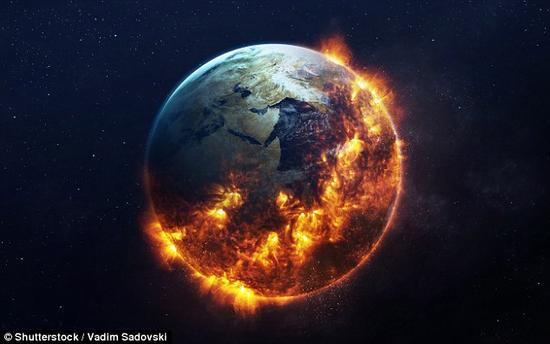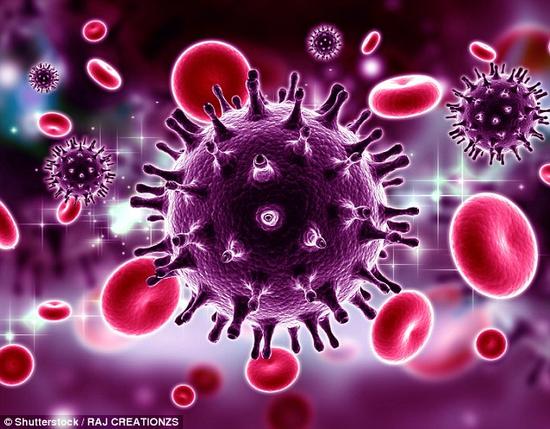
How human beings will be ended is the source of the endless charm of science fiction. But scientists claim that many of the scenes described in the movie—such as asteroid hits and killer robots—may not be as far away as you might think. Now, the researchers at the Cambridge University Survival Threat Research Institute (CESR) have listed 10 threats that may lead to the end of the world and human extinction.
Artificial intelligence
As technology societies think and adapt to the environment themselves, human beings face a more uncertain future. They have established themselves by disguising themselves as useful digital assistants and driverless cars. One day, if they were allowed to develop without control, the fate of humanity would be ended. The development of digital personal assistants such as Siri, Google Now, and Cortana is just the beginning of artificial intelligence applications.
According to external forecasting consultant Nick Bostrom of Wired magazine, by 2075 the machine will reach 90% of human intelligence. If the development of artificial intelligence goes beyond our understanding and control, it will threaten human development, which is very similar to the development of nuclear weapons.
The world-famous physicist Stephen Hawking and SpaceX's founder Elon Musk and more and more scientists and technologists have expressed their concern about the development of artificial intelligence in recent years. Professor Hawking said in his 2016 speech: “I think that the progress of artificial intelligence is not necessarily benign. Once machines have reached the critical stage of self-evolution, we cannot predict whether their goals are still the same as our goals. Intelligence may evolve faster than humans."
CESR believes that artificial intelligence may threaten the survival of human beings in the near future. Therefore, how to deal with them is a very important task.
2. Killer robot

New technologies may allow humans to relinquish control of lethal force. With the advancement of artificial intelligence, the possibility of machines being able to independently select and attack targets is rapidly becoming a reality. Automatic unarmed weapons, also known as "killer robots," are rapidly moving from science fiction to reality.
Proponents stated that these killer robots are necessary because modern warfare has become so quick, and because of the robots, the fighting will make soldiers and police no longer harm. But critics say that the threat to humans by killer robots may outweigh any benefits it offers to military or law enforcement. Removing humans from targeted decision-making will create a dangerous world in which machines will make life-and-death decisions beyond human control.
What is more worrying is that robotic killers may one day attack their creators, although CESR believes that this threat is currently only a low-priority task.
3. Biological hacking

Through synthetic biology, super bacteria can become a reality in the future, from the cure of diseases to the removal of pollution. Scientists are working hard to pursue new biotechnologies to change existing microorganisms at the genetic level in order to better understand their function or produce the desired results. Their efforts have achieved results in March 2016, creating artificial life forms in the laboratory.
However, bioengineering experiments or biohacking experiments may bring unexpected and extremely dangerous results. CESR attaches great importance to the development of this field. Just as current research on self-replicating microorganisms, such as viruses, is also highly risky, the escape of these microorganisms from the laboratory may lead to a global outbreak. The Zika virus made headlines in 2016, and people are worried that the outbreak will happen, affecting more than 2.5 billion people. This is another key area of ​​concern for CESR.
4. Nuclear war

There are now more than 15,000 nuclear weapons on Earth, but only 100 nuclear bombs are needed to turn the Earth into a disastrous nuclear winter. In 1983, astrophysicists, including Carl Sagan, introduced the concept of nuclear winter. Although these bombs themselves will cause catastrophic damage, scientists predict that the subsequent nuclear winter will also have a huge impact. This is because the nuclear bombs cause large-scale storms, smoke, dust and dust. If the nuclear bombs are put into major cities, the impact will be even greater.
Humans may be able to survive, but the living conditions on Earth will become extreme. In dealing with the aftermath of the explosion, with sudden drop in temperature, crops are difficult to grow and marine life is affected by excessive radiation, and humans will face global famine. Despite the alarming proliferation of nuclear weapons, CESR still sees it as a low-to-moderate risk.
5. Climate change

Since the industrial revolution, people have always been accused of disrupting the delicate balance of the atmosphere. When fossil fuels are used, they release carbon dioxide and other "greenhouse gases". Their concentration in the atmosphere is increasing at an alarming rate. A thick blanket is formed around the earth to absorb excess calories and increase global temperatures. . Although the weather is warm in some places, the "feedback loop" complicates the effects of temperature increase.
Increased evaporation leads to denser cloud coverage, which exacerbates the warming effect because the cloud itself is a strong insulator. For a long time, "carbon deposition" has become unstable and is being released from the place of storage, further exacerbating this problem.
Scientists warned of the arrival of a critical point, that is, the problem of global warming can no longer be resolved. If we approach this limit, the out-of-control greenhouse effect will cause temperatures to soar to hundreds of degrees Celsius, at which time the ocean will boil and life on Earth will no longer be able to survive. However, CESR sees climate change as another low-to-moderate risk.
High efficient charging speed for Toshiba laptop, stable current outlet can offer power for the laptop at the same time charge the laptop battery. The best choice for your replacement adapter. We can meet your specific requirement of the products, like label design. The plug type is US/UK/AU/EU. The material of this product is PC+ABS. All condition of our product is 100% brand new.
Our products built with input/output overvoltage protection, input/output overcurrent protection, over temperature protection, over power protection and short circuit protection. You can send more details of this product, so that we can offer best service to you!
Toshiba Adapter,Adapter For Toshiba,Power Supply For Toshiba,Laptop Charger For Toshiba
Shenzhen Waweis Technology Co., Ltd. , https://www.waweis.com
